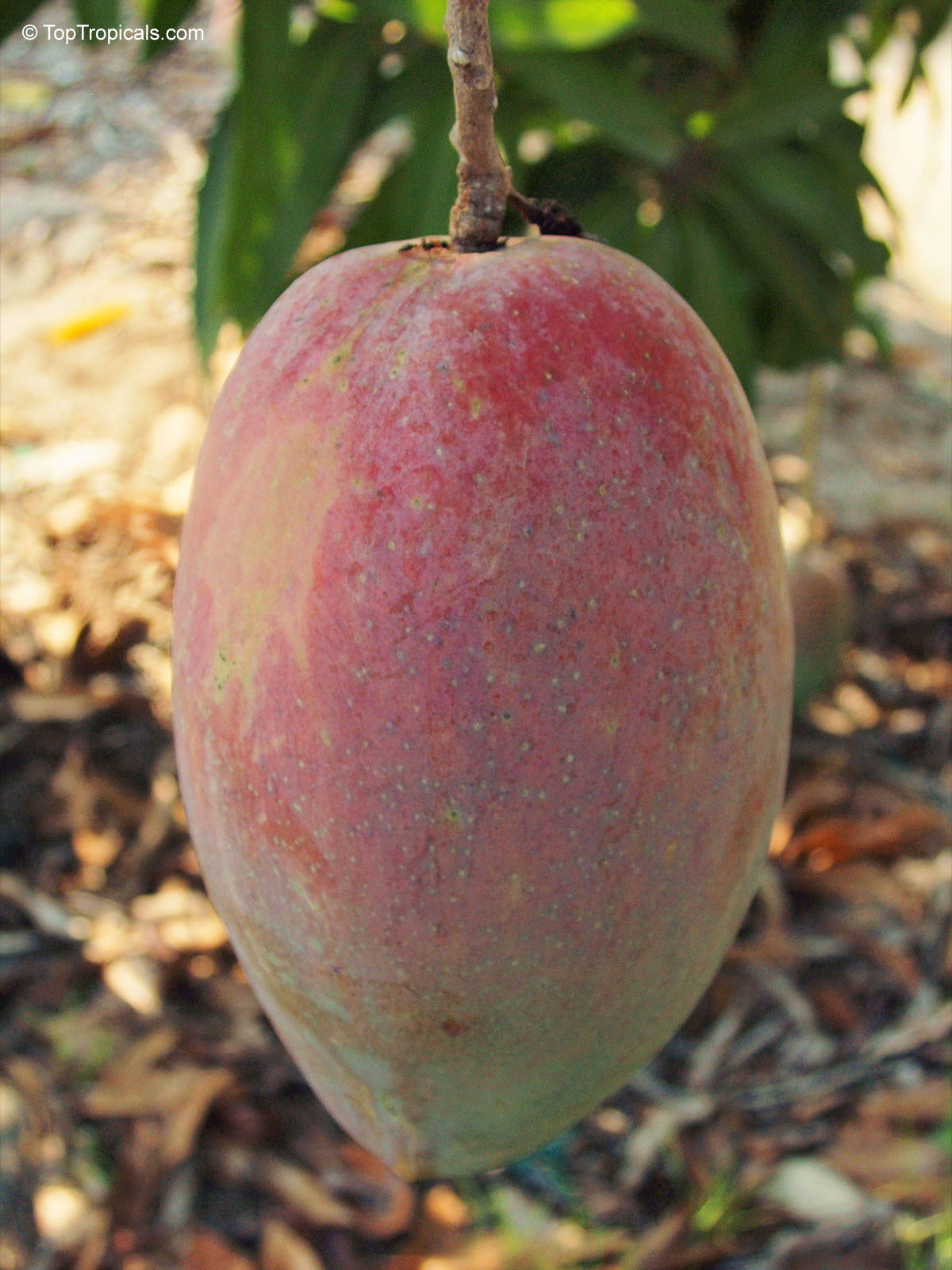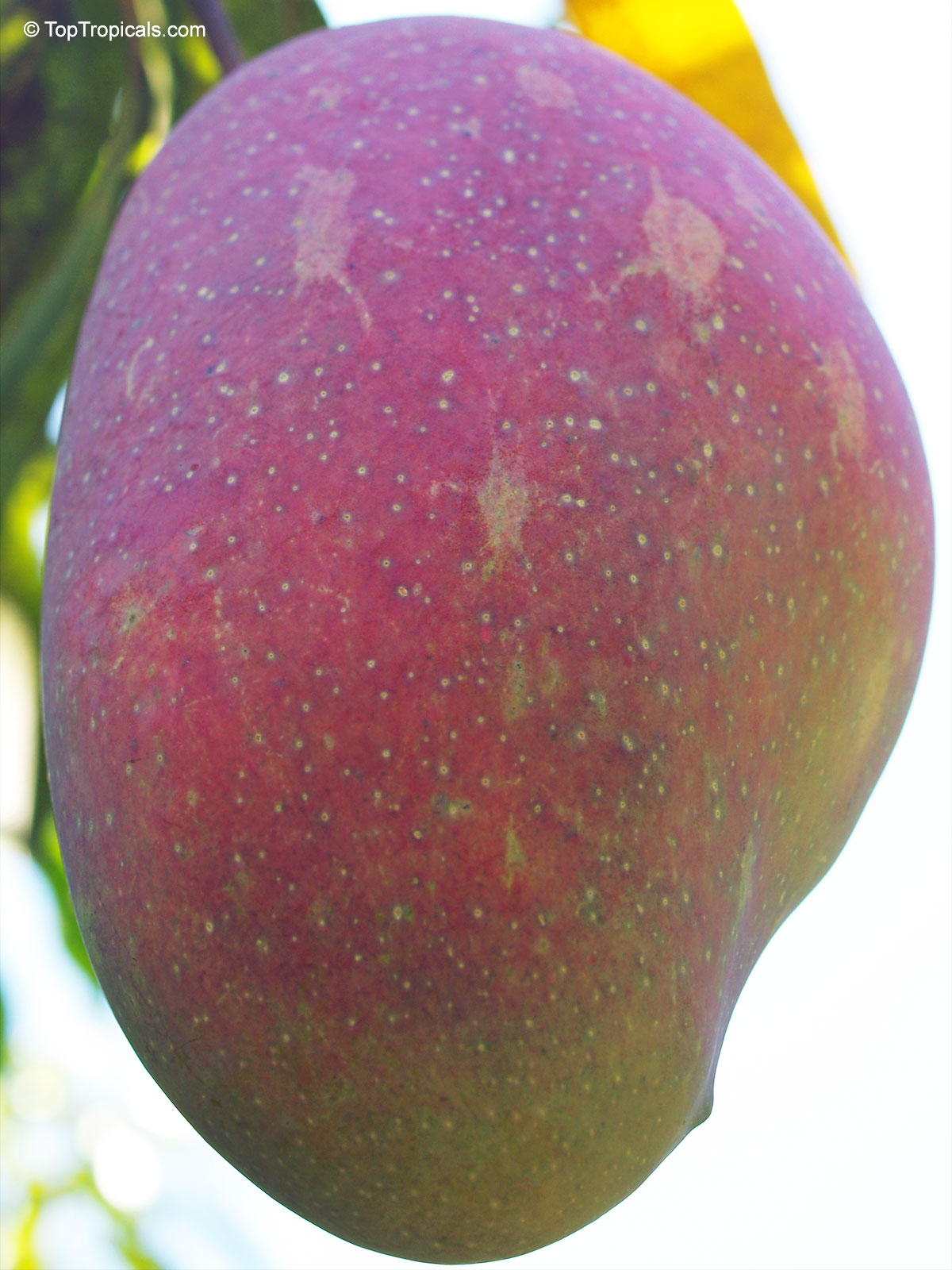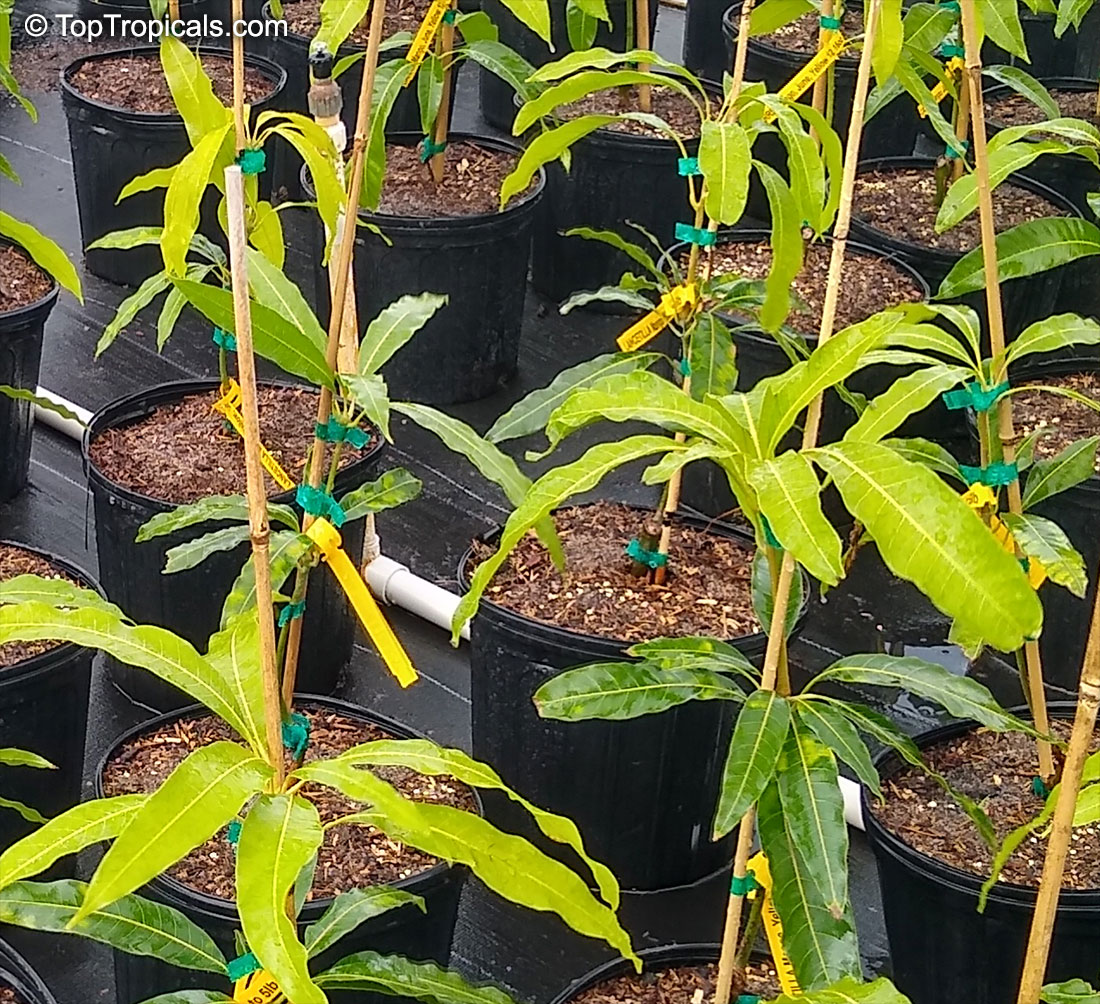Mangifera indica 'Lancetilla' (Lancetilla Mango)
Top Tropicals Plant Encyclopedia
Botanical name: Mangifera indica
Common name: Lancetilla Mango
Cultivar: Lancetilla
Family: Anacardiaceae
Origin: South Asia and India
Hardiness: 30°F






Mangifera indica (Mango) is a large evergreen tree native to South Asia and among the oldest cultivated fruit trees, grown in India for over 4,000 years. In tropical climates it can reach 60-80 feet with a broad crown of glossy leaves. Small yellowish flowers appear in spring, followed by fleshy drupes known worldwide as mangoes.
Fruit shape varies from oval to kidney-shaped, with skin that may remain green or ripen to yellow, orange, or red. The flesh is juicy and aromatic, sometimes fiberless and sweet, sometimes more resinous depending on type. Mangoes are eaten fresh, dried, blended, or cooked, making them one of the most versatile tropical fruits. Some people experience irritation on the lips from the peel, so fruits are usually eaten peeled.
The tree thrives in full sun and well-drained soil in warm climates, hardy only to USDA Zones 9-11. With hundreds of named cultivars, Mangifera indica remains one of the world s most widely grown and culturally important fruit trees.
See Mango varieties.
Mangifera indica 'Lancetilla' (Lancetilla Mango) is a Honduran mango cultivar known for producing exceptionally large fruit. The tree is vigorous and can reach 20-30 feet in open ground, though it can be pruned to a more manageable size for home gardens. Its elongated, slightly curved fruits often weigh 2-5 pounds each, with smooth red-blushed skin over yellow when ripe. The flesh is deep golden, fiberless, and mildly sweet with a rich tropical flavor, making it a standout among giant-fruited cultivars. Gardeners value 'Lancetilla' both for its dramatic fruit size and for its reliable productivity in tropical climates.
'Lancetilla' thrives in full sun and well-drained soil with regular watering during the growing season. It flowers in spring and typically ripens later in summer, extending the mango season. Hardy to USDA Zone 10-11, it must be protected from frost but can be container-grown in cooler regions with winter shelter. Its combination of impressive fruit, strong growth, and ornamental red-blushed harvest makes it a popular choice for collectors and home orchards.
Related cultivars: Mangifera indica 'Lancetilla' (Lancetilla Mango)
- Mangifera indica Alampur Baneshan ''Alampur Baneshan'' (Alampur Baneshan Mango)
- Mangifera indica Alphonso ''Alphonso'' (Alphonso Mango)
- Mangifera indica Baileys Marvel ''Baileys Marvel'' (Baileys Marvel Mango)
- Mangifera indica Beverly ''Beverly'' (Beverly Mango)
- Mangifera indica Bombay ''Bombay'' (Bombay Mango)
- Mangifera indica Cac ''Cac'' (Cac Mango)
- Mangifera indica Carabao ''Carabao'' (Carabao Mango)
- Mangifera indica Carrie ''Carrie'' (Carrie Mango)
- Mangifera indica Choc Anon ''Choc Anon'' (Choc Anon Mango)
- Mangifera indica Coconut Cream ''Coconut Cream'' (Coconut Cream Mango)



